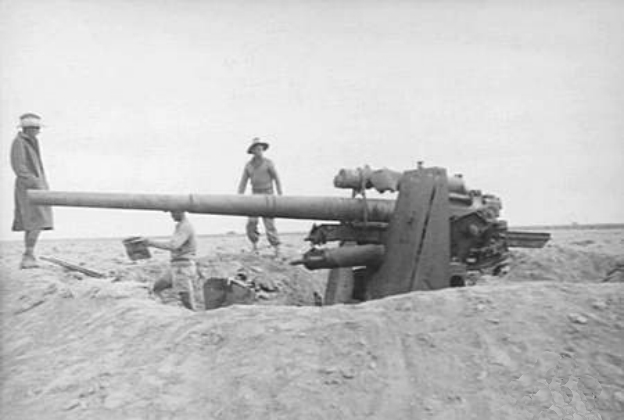- Thread starter
- #321
Wild_Bill_Kelso
Senior Master Sergeant
- 3,231
- Mar 18, 2022
You are cherry picking your images. There are plenty of pictures of dug in 88s such as this one taken in the desert in November 1942 View attachment 703465

File:88 mm Flak 36 near El Aqqaqir 1942.jpg - Wikimedia Commons
commons.wikimedia.org
View attachment 703462
To quote from the above "A direct hit is necessary to knock out any AA position."
"However very little if any damage was caused by a bomb falling more than 15 feet away."
View attachment 703464
Call me crazy, but I think
1) Flak positions are easier to locate and hit in the desert than in the jungle
2) Japanese did not have a lot of Flak 18 sized guns in the South Pacific
3) It's much easier to dig in a 20mm or 37mm AA gun than an 88 mm heavy AT gun.
4) It's much easier to dig in in soft ground than rock, and in the North African campaign quite often the ground was hard rock below a thin layer of sand.
5) I didn't cherry pick a God Damn thing, I did a google image search for "88mm at gun Afrika Korps" and that is what came up. Try it yourself.
6) Even the 88mm in that photo is only partly protected. When deployed for AT use, the gun barrel has to be poking over any kind of revetment or sandbag wall, and part of the gun rises above that. In an AA deployement by contrast, it can basically be completely inside a hole since it's shooting up.
7) All these other images of 88mm AT guns deployed without revetments and with little or no protection also appear to me to be real and from the war, or are you saying they are staged? made up by AI?
One of the points Hooton made is that the Germans lost 63% of their flak guns by November 17, so the question just remains how many of these were hit by air strikes and how many were captured or destroyed by ground forces. That is a concrete data point which should be obtainable. We don't have to debate abstracts which is clearly pointless.
